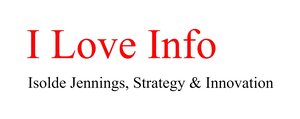The Big Blue Sign: Did years of miscommunication mean a Leave vote was inevitable?
It has been six days since the United Kingdom suffered one of the biggest political upheavals since Thatcher became prime minister in 1979. Our Twitter feeds, Facebook pages and news websites are filled with articles filled with #BREGRET. Amid the noise, one post stood out: Town showered with EU cash votes to leave EU. This is the tale of a small Welsh ex-mining town called Ebbw Vale. It has very little immigration and has received millions in EU funding.
The Guardian picture editor made an obvious choice for the leading photo, one designed to inspire a slow hand clap from us liberal, educated types - a picture of the big blue sign EU funds: Investing in Wales. If you live in a well off area of Britain you probably don’t see this very often. Maybe that’s part of the problem?
I grew up in Wexford, Ireland, a four hour ferry from Wales. My first years of life were not lived during the Celtic Tiger. Until 1995 all I remember are pot holes, butter vouchers and unemployment. I’m all too familiar with the Big Blue Sign. In fact, in Ireland they were even bigger and bluer. The first message most visitors saw when they got off the ferry was a 10 x 20 ft blue sign saying the EU had paid for the very road they were driving on. I hope my Dad will forgive me if I tell you, that he often swore under his breath as we drove by.
So this brings me back to the story: Town showered with EU cash votes to leave EU. The journalist was perplexed as to why the voters they spoke to didn’t seem to be aware of how much the EU had invested in Ebbw Vale. The reality, of course, was that if you probed further, they new exactly what the EU had done for their town. It was written in massive 120pt Helvetica all over it in fact. So why vote to leave?
I’m no expert on politics, however I do know something about how you communicate with people. You can understand these signs in two ways: a detached semiotic examination, or a more empathetic position, understanding the viewer and their feelings.
Based on my knowledge of semiotics (a six week seminar course as part of my BA in Visual Communication), you can see that these signs use the visual language of authority. All the symbols are there - the lack of imagery, the sans-serif 100% black text on white, the copy devoid of any emotion. In fact these signs don’t seem to want to inspire at all. Facts not opinions being the name of the game. In terms of copy, EU goes first, in the lead: ‘EU funds: investing in Wales’. The small but proud nation is represented by a cursory white outlined drawing of a dragon. Where’s the fire? Where’s the Tom Jones level of passion? Where’s Richard Burton? Shirley Bassey? Catherine Zeta Jones? It seems in an effort to be European, we’ve taken away any personality at all. The design of the Euro note anyone?
Now let’s put ourselves in the shoes of the viewer. Andy Warhol believed that if you saw the same image repeated over and over that this could only add to its power. Repetition therefore magnifies the feeling of the viewer. If you are bombarded with detached, authoritative Big Blue SIgns does this not only strengthen the feeling of being let down by the home country's government? Confirm feelings of abandonment? Extinguish any feeling of national pride you once had?
I believe we’re better connected, we’re better with free movement and we’re better without borders, however The Big Blue Signs which have been a reality for any community that has been deemed deserving of European Regional Funding (read poor) have potentially become symbolic of three things: abandonment, patronisation and powerlessness. Are we now seeing the results of years of miscommunication?

